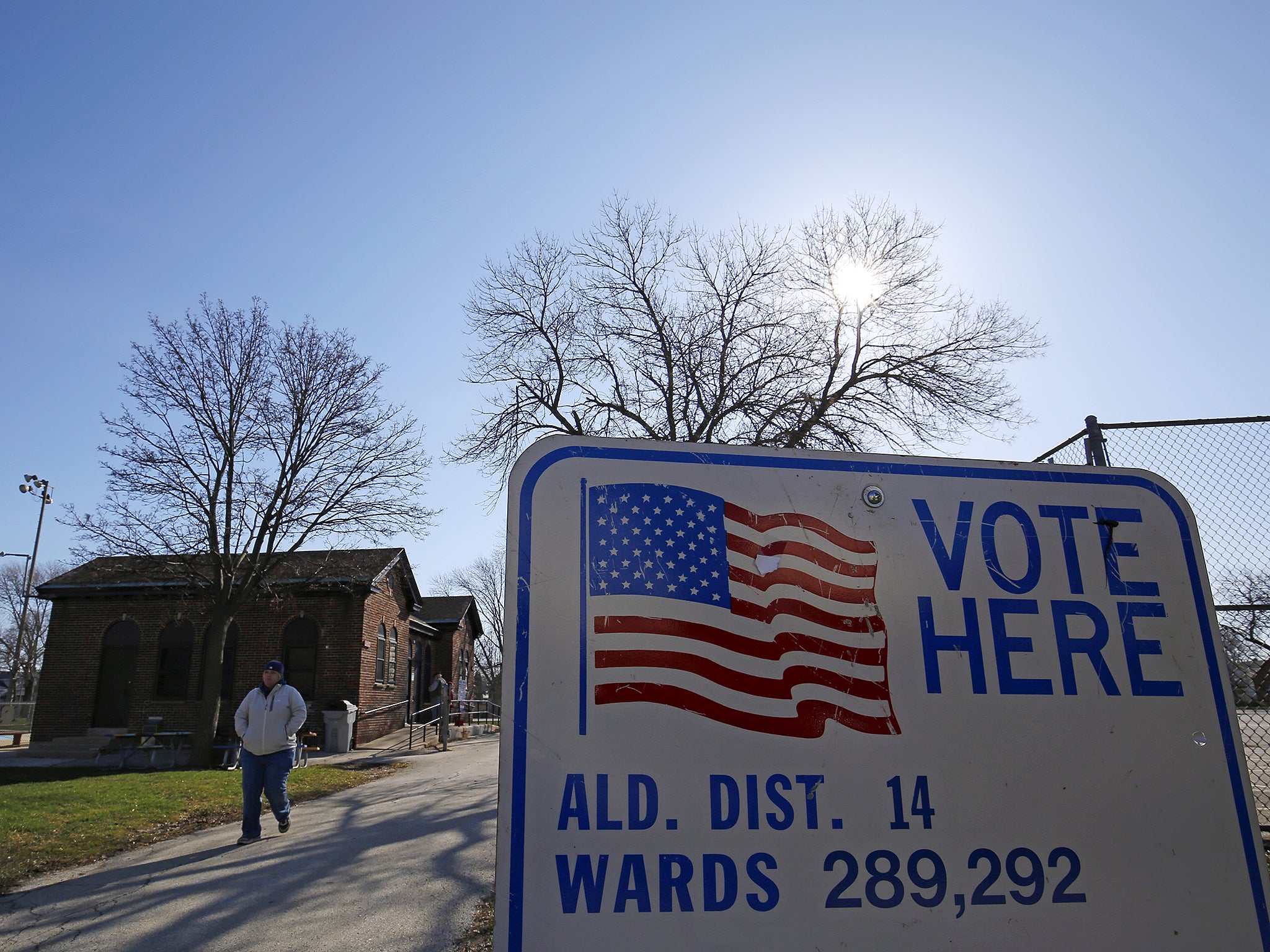Almost 17,000 people prevented from voting in key swing state won by Trump, study finds
Trump defeated Hillary Clinton by 22,748 votes in Wisconsin

Your support helps us to tell the story
From reproductive rights to climate change to Big Tech, The Independent is on the ground when the story is developing. Whether it's investigating the financials of Elon Musk's pro-Trump PAC or producing our latest documentary, 'The A Word', which shines a light on the American women fighting for reproductive rights, we know how important it is to parse out the facts from the messaging.
At such a critical moment in US history, we need reporters on the ground. Your donation allows us to keep sending journalists to speak to both sides of the story.
The Independent is trusted by Americans across the entire political spectrum. And unlike many other quality news outlets, we choose not to lock Americans out of our reporting and analysis with paywalls. We believe quality journalism should be available to everyone, paid for by those who can afford it.
Your support makes all the difference.WASHINGTON — Nearly 17,000 registered Wisconsin voters — potentially more — were kept from the polls in November by the state’s strict voter ID law, according to a new survey of nonvoters by two University of Wisconsin political scientists.
The survey, summarized Monday on the university’s website, is certain to further roil an ongoing debate over whether President Donald Trump’s narrow victory in Wisconsin over Hillary Clinton was a result of efforts to depress Democratic turnout.
Trump defeated Clinton by 22,748 votes out of more than 2.9 million ballots cast. The November turnout in Wisconsin, 69.4 percent of eligible voters, was the lowest in a presidential election year since 2000.
The study summarized on Monday specifically does not make that claim, its principal author, Kenneth R. Mayer, a professor at the University of Wisconsin-Madison, said in an interview. But neither did he rule it out.
“The survey did not ask any questions about how people would have voted or about their party identification,” he said. “But it’s certainly possible that there were enough voters deterred that it flipped the election.”
Wisconsin’s voter ID law, enacted in 2011 after Republicans took control of the Legislature and the Statehouse, requires citizens to show a driver’s license, a passport, a naturalization certificate or one of several other fairly uncommon documents before casting a ballot.
A federal court blunted the impact of the law in 2016, ordering the state to give a free ID to any voter who asked for one, but the state’s implementation of that order was criticized as ineffective.
In Wisconsin and elsewhere, Republicans have argued that an ID requirement is necessary to combat an epidemic of fraudulent voting, although studies have repeatedly shown that illegal voting is exceedingly rare. Privately, some Republicans have allowed that the laws’ main intent is to keep people who often vote Democratic — the poor, the young and minorities — from going to the polls.
The study reported Monday, by Mayer and a doctoral student in political science, Michael G. DeCrescenzo, concludes that that is largely what occurred in November.
Their survey involved 288 registered voters in the state’s two most populous counties who did not cast ballots in the 2016 election. Based on their answers, the study estimated that 11.2 percent of the counties’ 160,000 registered nonvoters were kept from casting ballots by the voter ID law.
Of those, they estimate that 6 percent were prevented from voting because they actually did not have an acceptable ID. Most of the remaining registrants possessed acceptable IDs, the study stated, but did not try to vote because they mistakenly believed that the ID would not be accepted.
Of the survey respondents who said the voter ID law deterred or prevented them from voting, about 8 in 10 had voted in the previous presidential election, the survey showed.
The study also found that the law disproportionately affected low-income and African-American voters: 21.1 percent of registrants earning less than $25,000 a year were estimated to have been deterred from voting, compared with 2.7 percent of registrants making $100,000 a year or more. More than 27 percent of blacks reported being deterred, compared with about 8 percent of whites.
All told, the study concluded, about 25,800 registrants in the two counties could not or did not cast ballots because of the law. Still more residents elsewhere in the state undoubtedly were kept from voting by the law, Mayer said, but the survey results from the two counties, which include Madison and Milwaukee, cannot be applied to other parts of the state.
It has been difficult to gauge the effect of voter ID laws, Mayer said, because each election is different and people have many reasons for not voting. Political scientists have usually relied on statistical analyses of voter data to draw conclusions on the laws’ impact. But surveys of actual nonvoters can provide more reliable estimates, he said, because they directly measure people’s motivations for voting or staying home.
The Wisconsin study broadly confirms the results of another survey of nonvoters conducted by Rice University scholars after the 2014 congressional election. That study concluded that 9 percent of nonvoters in the state’s 23rd Congressional District were discouraged from voting by Texas’ voter ID law — often, as in Wisconsin, because they mistakenly believed they lacked a valid ID.
New York Times
Join our commenting forum
Join thought-provoking conversations, follow other Independent readers and see their replies
Comments